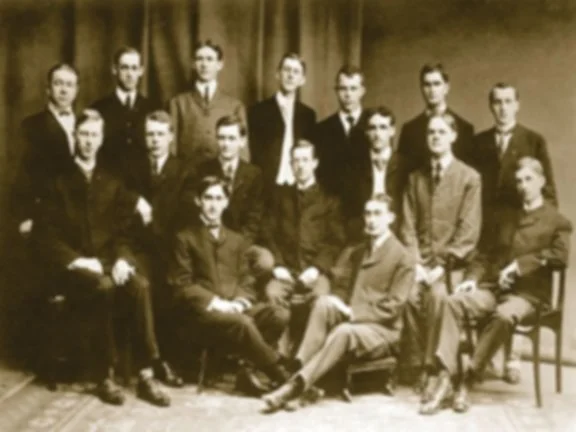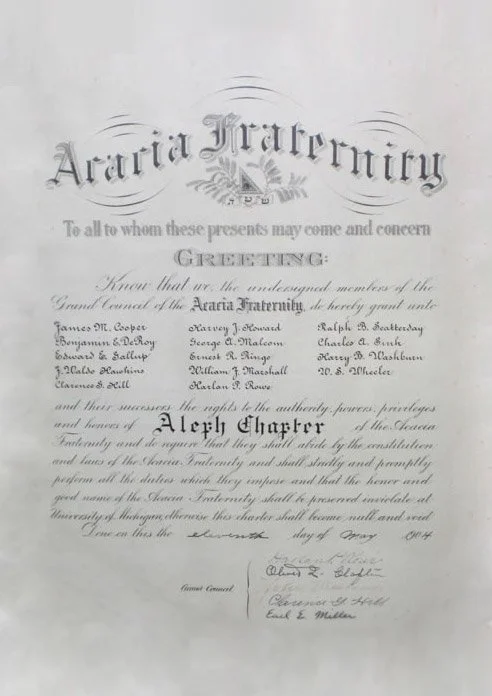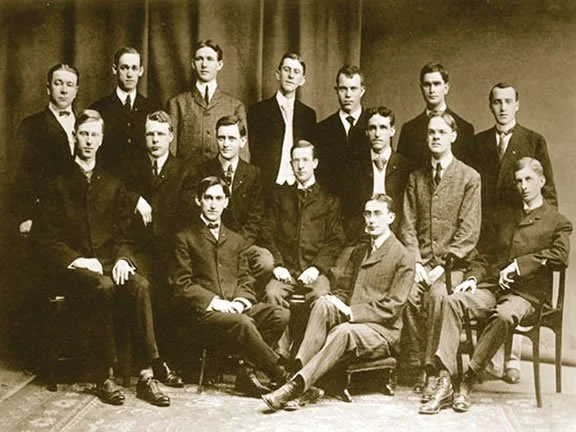
Our History
The Founding
The scene opens shortly after class began in the fall of 1903 at the University of Michigan, as William J. Marshall approached Charles A. Sink in the university library to inquire about the status of the university's Masonic Club in which he had been a moving spirit before a two-year absence from college. The ever-passionate Marshall was emboldened upon hearing of the near demise of the organization. “We’ve got to organize on a fraternity basis,” he said, “We will take only those who are interested and will work, rather than keep it open to all Masons of the university.”
Thus, over the course of several meetings in the ensuing few days, Acacia was conceived in the library of the University of Michigan, largely thanks to the enthusiasm and insight of one man who fanned it into life from the dying embers of the fading Masonic Club.
The work necessary to make this concept a reality took place in a small room occupied by Benjamin E. DeRoy in a house owned by Edward E. Gallup in Ann Arbor. During the winter and spring of 1903-04, a group of kindred spirits led mainly by Marshall and Walter S. Wheeler met there each week. On January 31, 1904, a committee was formed “to ascertain the legal requirements for forming a fraternal organization to be national in scope.”
This investigation was made, and Masonic authorities were informed about the group’s plans so that there would be no misunderstanding regarding the nature of the organization. Both of these matters were concluded satisfactorily, and on May 12, 1904, articles of incorporation were filed with the clerk of Washtenaw County.
Before the end of the spring semester of 1904, the fraternity adopted its constitution, colors, and badge. The colors were originally dark blue and old gold, only later changed to black and old gold.
The original charter of the Michigan Chapter.
Thus Acacia’s founders established a fraternity on a new basis. The members were to be motivated by a desire for high scholarship and of such character that the fraternity house would be free of the social vices and unbecoming activities that had been a blot on the fraternity life of the nation.
Today, Acacia's ties to the Masonic fraternity are informal and symbolic in nature, and there is no requirement of membership in the Masonic Lodge to join Acacia.
Read more about Acacia's founding and history in the Pythagoras membership manual. →
Acacia’s Fourteen
Founding Fathers
Back Row: Edward E. Gallup, Ralph B. Scatterday, Ernest R. Ringo, R.W. Bunting (pledge), C.C. Van Valkenburgh (pledge), Clarence G. Hill, Benjamin E. Deroy
Middle Row: Harvey J. Howard, Harry B. Washburn, William J. Marshall, Harlan P. Rowe, Walter S. Wheeler, George A. Malcolm, Jared W. Hawkins
Front Row: Charles A. Sink, James M. Cooper



